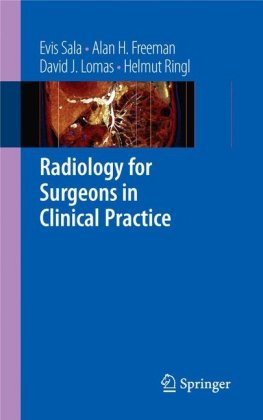

Most ebook files are in PDF format, so you can easily read them using various software such as Foxit Reader or directly on the Google Chrome browser.
Some ebook files are released by publishers in other formats such as .awz, .mobi, .epub, .fb2, etc. You may need to install specific software to read these formats on mobile/PC, such as Calibre.
Please read the tutorial at this link: https://ebookbell.com/faq
We offer FREE conversion to the popular formats you request; however, this may take some time. Therefore, right after payment, please email us, and we will try to provide the service as quickly as possible.
For some exceptional file formats or broken links (if any), please refrain from opening any disputes. Instead, email us first, and we will try to assist within a maximum of 6 hours.
EbookBell Team

0.0
0 reviews‘Radiology for Surgeons in Clinical Practice’ is aimed at surgeons both consultants and those in training who are interested in the advancing role played by imaging technology within surgical decision making.
The prevalence of imaging technology in both the diagnosis and management of surgical patients has increased dramatically in recent years. The increased availability and combination of different imaging modalities have greatly improved the ability of obtaining rapid and accurate diagnoses.
Cross-sectional imaging is now widely available and is routinely used to evaluate patients who potentially require surgery. Similarly, multi-detector CT plays a vital role in the management of acute surgical patients. It is therefore essential that the surgeons have a fundamental knowledge of the imaging findings of the main surgical pathologies.
This book is organised in two sections, with the first part describing the principles of imaging, and the different imaging techniques available to the surgeon. The advantages and disadvantages of each technique are also highlighted providing useful information and guidance to the surgeon on the appropriate choice of imaging. The second part of the book is symptom-based rather than organ-based, with the aim of providing a practical hands-on approach to imaging patients with common surgical complaints.
Written by leading experts in the field, this book will help the surgeon to better understand the imaging options available to them, and choose the correct modalities using a problem-based approach.